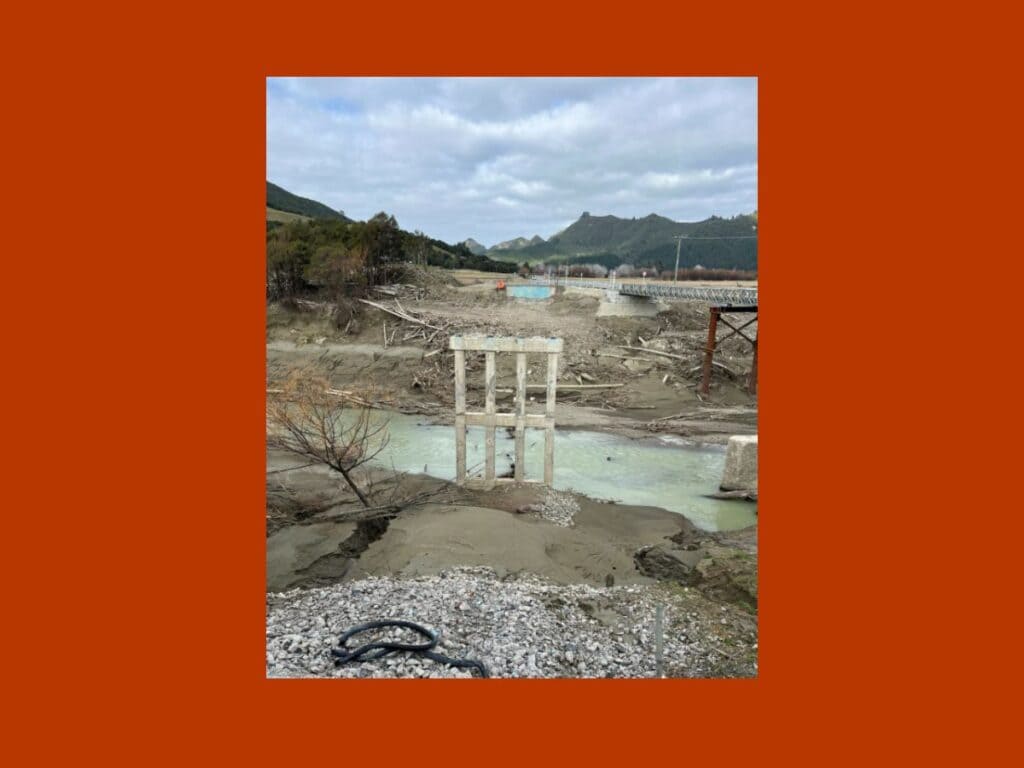Restoring essential services is a key challenge in the wake of extreme weather events and the starting point is good data collection.
Fragility of Essential Services
Water at the turn of a tap, light at the flick of a switch, nationwide communication after a few taps on a phone – services we take for granted as part of modern life.
What else do we rely on? Access to emergency services, transport, healthcare, banking transactions, fresh produce from around the motu, not to mention the removal of rubbish and wastewater from our houses.
But all these amenities depend on infrastructure that can be shut off in an instant.
In the summer of early 2023 it took one weather event – Cyclone Gabrielle – to isolate numerous communities from essential services by damaging critical infrastructure.
The Downpour
The rain came down. At some locations on the North Island’s east coast over a quarter of their average annual rainfall fell in 24 hours.
The land came down. The high rainfall caused an estimated 800,000 landslides.
The rivers filled up and carried silt and forest slash out onto the plains.
Bridges, pylons, power poles, water pipes, railway tracks and roads were no match for the volume of water and number of landslides. Critical infrastructure was extensively compromised.
Given the interdependencies between water, power, communication, and transport networks, a system-level understanding of the damage was essential for making good recovery decisions.
Liam Wotherspoon (Waipapa Taumata Rau University of Auckland) and Charlotte Brown (Joint Managing Director, Resilient Organisations), leading a team of researchers, proposed a project to gather information about critical infrastructure damage and provide advice for recovery.
The Ministry of Business, Innovation and Employment funded the work from its extreme weather science response.
Data Collection for Recovery
Coordinated collection of spatial and temporal data was undertaken to provide a comprehensive picture of the damage to critical infrastructure and the levels of service available over time.
Infrastructure agencies fed data into the project despite being very busy in disaster recovery mode.
The overall aim was to obtain the information required to better understand how New Zealand’s critical infrastructure systems work as an integrated whole and how they can be improved to better withstand future events.
Roger Fairclough, Chair of the New Zealand Lifelines Council, was instrumental in facilitating relationships between researchers and service providers. Students did much of the work.
Liam says, “Collecting data after a damaging event provides the baseline evidence required to support organisations to recover and plan future solutions. This database will be one of the most complete sets of post-event data ever collected in New Zealand.”
Wisdom from Past Events
Te Hiranga Rū QuakeCoRE researchers are well placed to offer leadership in the face of challenges to infrastructure. Past disaster events, both nationally and internationally, have given them relevant experience.
Insights were gathered from 14 major natural hazard events around the world and a policy briefing was prepared on the key lessons for critical infrastructure recovery.
Opportunity out of Disaster
Rebuilding after disasters provides a key opportunity to strengthen infrastructure networks.
New Zealand’s National Disaster Resilience Strategy defines “resilience” as, “the ability to anticipate and resist the effects of a disruptive event, minimise adverse impacts, respond effectively, maintain or recover functionality, and adapt in a way that allows for learning and thriving.” The researchers developed a checklist to help decision-makers integrate improvements into the rebuilding of infrastructure.
Charlotte explains, “The more data points we get, the better we can understand the system. This project will feed into broader research producing fragility curves and risk estimates, so that well-informed business cases and investment decisions can be made about improving resilience to future events.”
Cyclone Gabrielle will be Aotearoa New Zealand’s costliest non-seismic hazard event ever. With climate change likely to result in more frequent intense weather, we can’t afford not to improve infrastructural resilience to such events.
Liam and Charlotte are pleased that this work provides extensive, real-world evidence that will help New Zealand better value the building of resilience into the critical services that support our communities.

